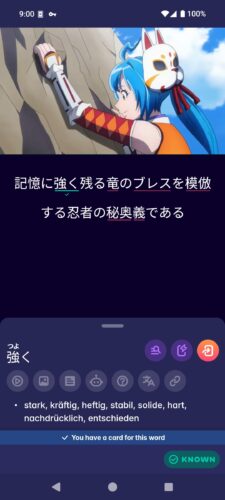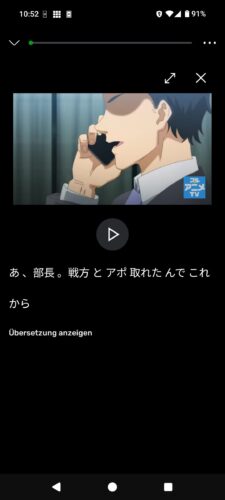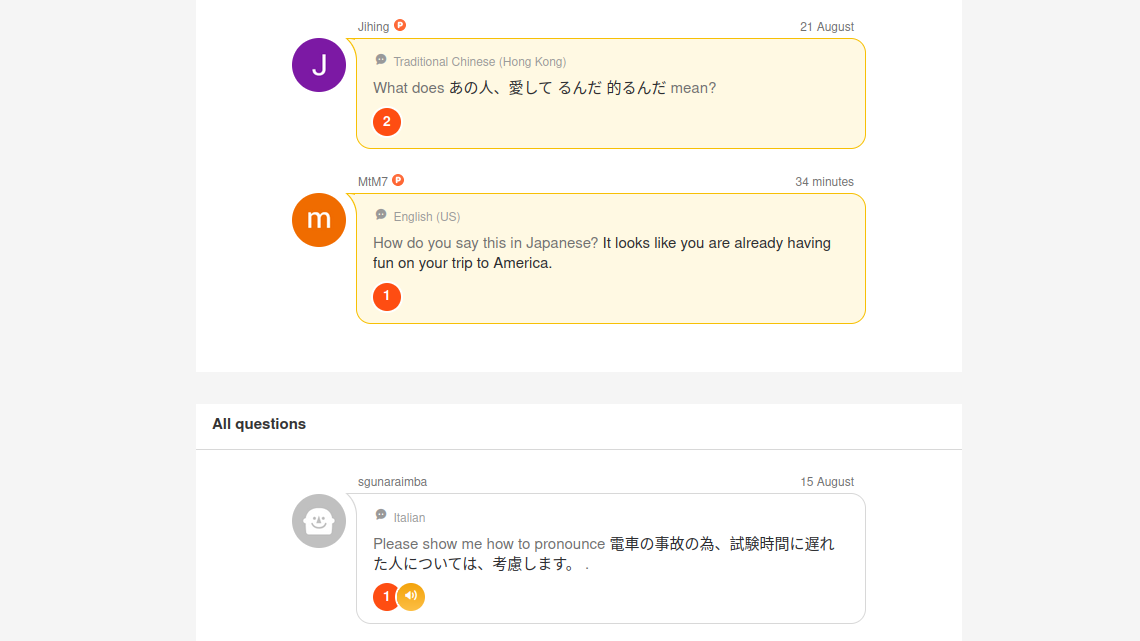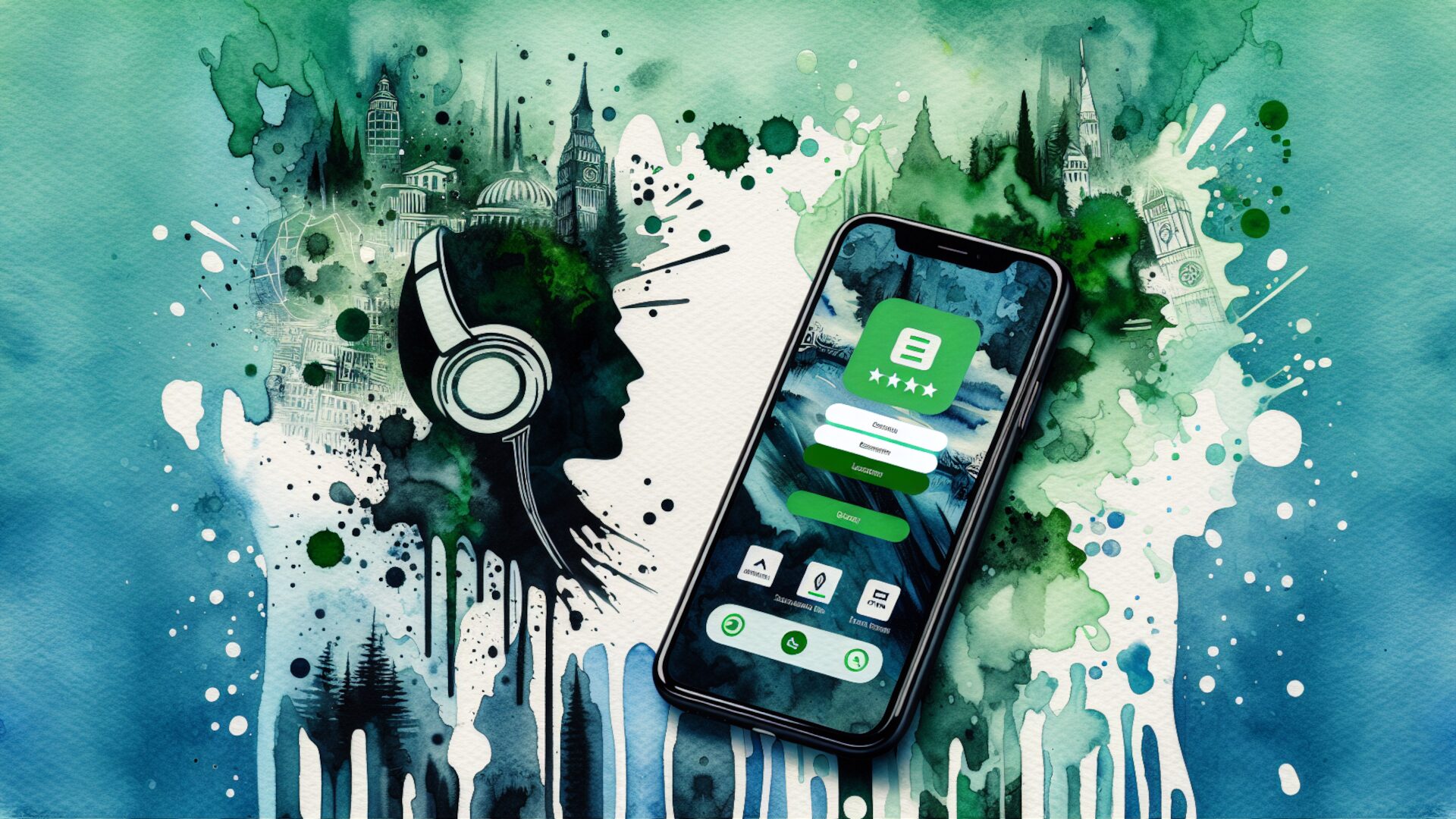Language learning apps are as plentiful as sand on the beach. As a linguist with more than 15 years of experience specializing in language acquisition, I've tried dozens myself and was simply held back by most of them. My conclusion: I'm not surprised that only very few people master a foreign language fluently, even though language learning apps make a fortune. But there are definitely some that really help you!
My language learning app recommendations
What are the best apps to learn a language?
The best language learning apps are those that help you understand texts word by word and sentence by sentence. Ideally, they also give you a clear path where you learn new words with example sentences in which you only don't know a single word.
Centuries of language research lie behind this insight. Linguists like Krashen, Butzkamm and Caldwell have a clear answer: As long as you understand a message, you learn a language. Accordingly, an app must help you with exactly that. Typical practice exercises, on the other hand, exist to assess language level, not to learn.
But who am I to recommend completely different language learning apps than most others? I started getting interested in Japanese - one of the hardest languages for English and German native speakers - in 2007. At university, I studied Japanese Studies and Linguistics. During this time, I researched constructed languages and also talked with icons in the field like David J. Peterson. After completing my B.A. degree, I deepened my knowledge in language acquisition and developed my own Japanese course based on recognized language research.
1. Migaku

- Supported languages: English, French, German, Japanese, Korean, Portuguese, Spanish, Cantonese Chinese, Vietnamese
- For: Android, iOS, Browser
- Price: 10 € / month
In my opinion, Migaku is the best language learning app of all! It offers you a beginner course for many languages, with which you learn the most common words through sentences where you only don't know the new word. More courses are being added over time.
A unique feature is the dictionary function: You can watch YouTube videos with it and then look up any word with a click, as well as create a vocabulary card with an image and example sentence from the video. For repetition it uses a sophisticated flashcard-system based on the SM-2 Learning-Algorithm, with plans to add the even more effective FSRS in the future. Both make sure that you only repeat a card shortly before you are about to forget it again.
If no subtitles are available, you can have them created. And if you're on a PC, you even get this function with Netflix and Disney+. It also works with texts via clipboard and with images through automatic text recognition. The dictionaries are mostly in English. But you can also download one based on Wiktionary for your own native language.
After the courses, you have a powerful tool for your entire learning journey. You just need to use it correctly! And when you use my link and upgrade during your free 10-day trial period, you get a free month with a subscription, or save 10 percent on lifetime access - or more in case a special deal is currently running.
2. LingQ

- Supported languages: 50 languages (including: English, Spanish, French, Italian and more)
- For: Android, iOS, Browser
- Price: 14.99 € / month
Learn with real language from the beginning: LingQ offers a range of prepared texts, audiobooks and videos that can be sorted by difficulty. And when you don't understand a word, you can simply click on it for a translation. This is based either on a dictionary or - if none is available - an automatic translation.
The app isn't entirely perfect: I personally found the interface somewhat cumbersome and am not a fan of the heavy automation. However you can get used to it and then have everything important to gradually improve your language level. It's especially useful when the first app of this list does not support the language you want to learn. You just need to be a bit careful if you use one of the automatic dictionaries.
3. FluentU

- Supported languages: Spanish, English, French, Chinese, German, Japanese, Russian, Italian, Korean, Portuguese
- For: Android, iOS, Browser
- Price: 30.99 € / month
FluentU also lets you quickly look up words on YouTube and similar sites - but only in English. The best feature is the word search. You can search video scripts for specific words and thus find content that contains certain vocabulary.
For use, there is a pre-selection of YouTube videos with manually created subtitles where you can use the - slightly cumbersome - lookup function for unknown words. For words not in the dictionary, AI translations are used. So you need to be careful here.
However, not everything is good: There's also a classic quiz function that doesn't really help you as a self-learner. But you have to go through it if you want to learn vocabulary, which makes efficient review difficult. Remember though: Vocabulary cards aren't as important in the beginning as many learners think. For languages without spaces like Japanese, words are often incorrectly separated, leading to unusable translations.
The app also wants to get you speaking quickly, which I can only warn against. And the speech recognition used for this doesn't work reliably.
However, if you know what you can use the app for, it can still be helpful.
4. Graded-Reader-Apps
There is another whole type of app that can help you. However, you have to search for the right one for each language yourself. These are apps for Graded Readers. They revolve completely around offering you hand-selected natural content in a language of your choice and providing a popup dictionary like the three previously mentioned apps.
For Japanese, there's Satori Reader. For Chinese, there's DuChinese. It's definitely something you should search for the language you are learning.
Apps for Learning how to Speak and Write
The previously mentioned apps primarily focus on helping you better understand languages. This is a necessary foundation before you can begin speaking and writing! However, there are only a few helpful apps for practicing these skills.
Most apps rely on dragging sentences with pre-made blocks together or multiple-choice questions. But both have negligible learning effects. Programs that claim to check pronunciation often accept pure gibberish as correct, or tell native speakers they're speaking incorrectly.
What truly helps are the following:
1. Shadowing with a Recorder App
- For: Android, iOS, PC
- Price: Free
When using the apps mentioned above, you're already working with material recorded by native speakers. And speaking in a foreign language begins with copying! So use any recorder app and record yourself repeating sentences. Then compare your recording with the original and adjust your pronunciation.
2. Google Docs
- Supported languages: Over 25 languages
- For: Android, iOS, Browser
- Price: Free
Google Docs isn't exactly what comes to mind for language learning. But it's perfect for improving your output, especially writing! The reason is the spell and grammar check that you can use in foreign languages!
You can simply write texts in your target language. Google Docs immediately marks errors, and you can think about what the correct form should be. Of course, it doesn't work perfectly, as you already know from English. Compared to AI tools, it has the advantage that corrections don't come immediately, encouraging you to reconsider the sentence yourself. Naturally, Google also offers direct improvement suggestions.
3. HiNative

- Supported languages: Over 110 languages
- For: Android, iOS, Browser
- Price: Free / Premium features available
On HiNative, you can write blog posts in a foreign language or even upload recordings of yourself speaking. Native speakers then view or listen to these and can provide corrections and additional feedback. You can also ask questions about other countries and their cultures. Ideal for practicing writing and speaking!
The core functions of the app are free. However, you can pay for certain advantages. These include priority tickets, which display your posts higher up. The premium subscription includes 10 of these tickets monthly along with other benefits, including various question templates for different situations.
Everything you need to know about language learning apps
There are countless language learning apps, but very few are based on linguistic research. According to Stephen Krashen's input hypothesis, the important thing when learning a new language is comprehensible input:
Language acquisition requires meaningful interaction in the target language - natural communication - in which speakers do not pay attention to the form of their utterances, but to the messages they convey and understand.
This thesis was reaffirmed by Wolfgang Butzkamm & John A. W. Caldwell, and further concretized with the double input hypothesis. Accordingly, you are looking for apps that help you understand natural Japanese as a whole and the individual words that make up a message.
This depends on how closely related the foreign language you want to learn is to your native language. The US Foreign Service Institute estimates 552-690 hours for closely related languages. For the most difficult ones - which includes Japanese, which I successfully teach via Udemy course* - it takes up to 2,200 hours.
This claim is repeatedly made by numerous AI-based language learning apps nowadays. But this can actually be hindering. Language acquisition follows different stages:
- First, you only listen and read, gathering experience with the language. You find out how native speakers say things.
- Then you start reproducing familiar things 1:1. This way you get used to speaking the language.
- Only at the end do you begin forming completely original sentences.
When you should start speaking cannot be generalized. This also depends on how many similarities your native language and your target language have. If they are more closely related, you can start speaking earlier. With more distant languages, however, you should gather more experience first.
The important thing is that apps offer the right functions: A way to quickly look up words. With Migaku, the best one I know in this area is paid. But there are definitely free alternatives too. Just not necessarily for every language, and these are often somewhat more complicated to set up.
Yes, but only with the right apps and methods. You need to be able to quickly look up unknown words to acquire them and thus be able to read fluently over time. And then you can even be faster than through traditional instruction.
Your smartphone's microphone app in combination with an audio or video file. The best method remains shadowing: Copy real native speakers e.g. in YouTube videos and record yourself. Then compare your pronunciation with the original. Some apps also offer pronunciation trainers. From experience, however, these are never really good. They often only focus on pitch and even accept complete gibberish as correct.


